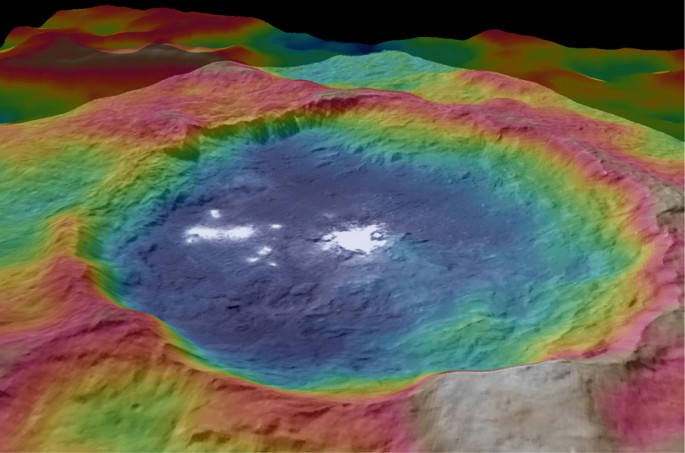NASA just released new color maps along with compelling data courtesy of the Dawn spacecraft that offers unprecedented views of dwarf planet Ceres.
The maps show various approved names for the features on Ceres that are based on spirits, deities and festivals from different global cultures. A 12 diameter area in the northern polar region of Ceres is now called Ysolo Mons after a festival in Albania that marks the first day of eggplant harvest.
According to Dawn's principal investigator Chris Russell from the University of California, Los Angeles, Ceres still continues to amaze and puzzle everyone as new data is revealed that include a multitude of images, spectra and even energy particle bursts.
One map in false color transforms the surface of the planet by revealing compositional differences of the planet's terrain where the feature that is observed the most is the Occator crater which is a region indigenous to the dwarf planet's bizarre, bright spots as a mysterious cone shaped mountain rises for four miles.
According NASA Dawn principal investigator, Carol Raymond from NASA's Jet Propulsion Laboratory, the irregular shapes of these craters on Ceres are quite interesting as they resemble the craters found on the Saturn's icy moon, Rhea. However, scientists also note that the craters are vastly different from the ones found in Vesta, which is a large asteroid that the Dawn spacecraft had explored prior to this mission.
Astronomer Giuseppe Piazzi discovered Ceres in 1801 where the cosmic body measures 606 by 565 miles which is also considered the first and largest asteroid found in the major asteroid belt between Mars and Jupiter.
The Dawn probe is currently in Ceres' orbit at an altitude of 915 miles where the probe will map the entire surface of the dwarf planet and take images up to six times over the entire course of the mission where each imaging cycle will take 11 days.
Beginning this month and into December, Dawn will spiral down to its lowest and final orbit at the closest distance of 230 miles from the surface of Ceres where it will take more images and gather more data at higher resolutions, staying in orbit until 2016.



























